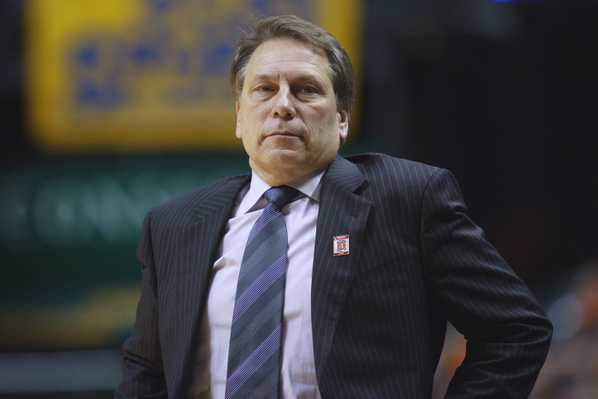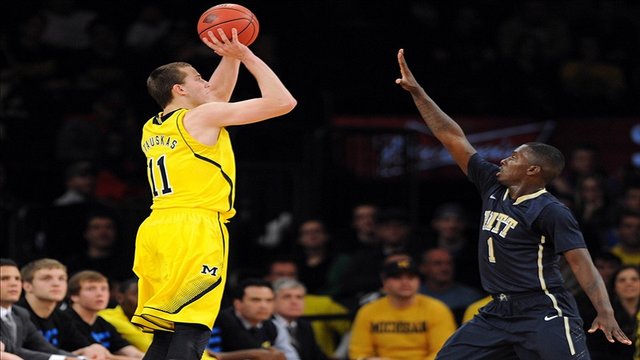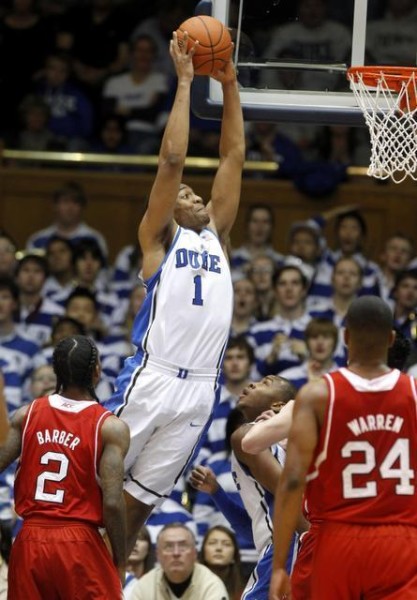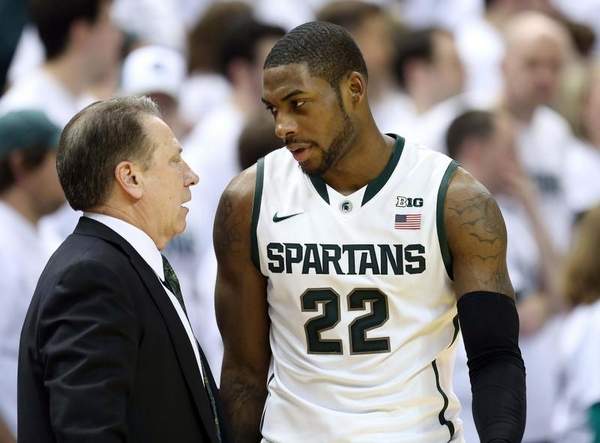Ten Offseason Storylines From the Big Ten
Posted by Brendan Brody on October 15th, 2014We’re about a month away from Big Ten basketball once again being a part of our lives. Things at the B1G microsite have been quiet since then, but that doesn’t mean nothing has happened since last April. So here’s a quick refresher to get everybody back up to speed since we last saw Wisconsin lose a heart-breaker to Kentucky in the Final Four. These 10 offseason storylines are in no particular order, but they will impact what will happen this season.
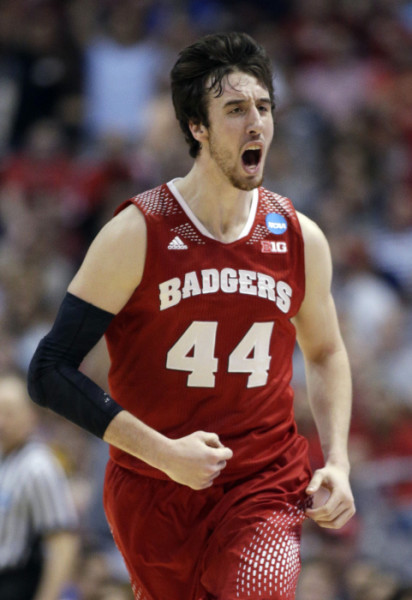
Frank Kaminsky came back to school for his senior season to lead a veteran Wisconsin team with a chance to go back to the
Final Four. (AP Photo/Alex Gallardo)
- Frank Kaminsky and Sam Dekker Returned to School: Postseason souting reports had Kaminsky going everywhere from #15 to #45 in the NBA Draft, even after a regular season where he led the Badgers in scoring and contributed NCAA Tournament averages of 16.4 PPG and 5.8 RPG on 55 percent shooting from the field. Dekker probably could have pursued NBA riches as well, but they both came back to Madison, making the Badgers — with two other returning starters in Josh Gasser and Traveon Jackson — an almost unanimous conference favorite.
- Gary Harris and a Quartet of Michigan Players Didn’t: Things aren’t quite as rosy in East Lansing or Ann Arbor as far as preseason outlooks go. That’s because to the surprise of almost no one Gary Harris departed for the NBA after his sophomore year. This means that the Spartans will be without three of their four double-figure scorers from last season’s Elite Eight team. Meanwhile, Michigan is rebuilding things from scratch after the early NBA departures of sophomores Nik Stauskas, Glenn Robinson III, and Mitch McGary. None of the trio was ever a sure thing to jump to the pros, but things got especially wonky when it was learned that McGary would be suspended for the entire 2014-15 season due to a positive drug test during the NCAA tournament. Another Michigan gut punch was the transfer of Jon Horford to Florida, leaving the Wolverines with almost no experience on the front line heading into this season.






























